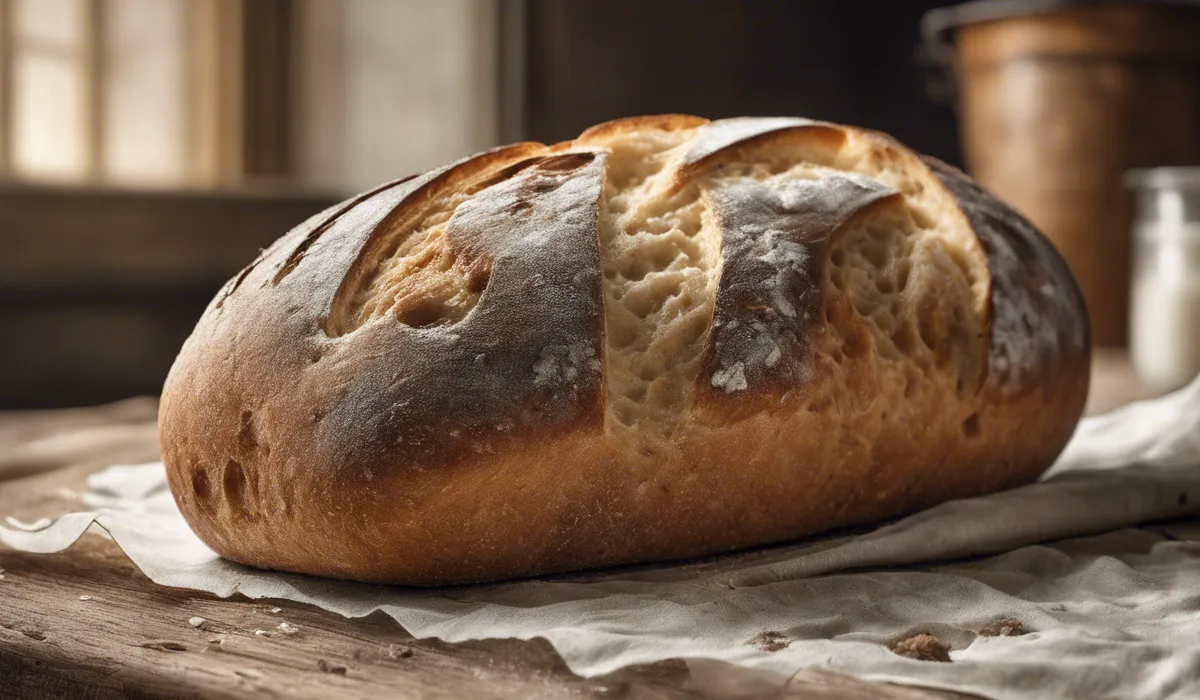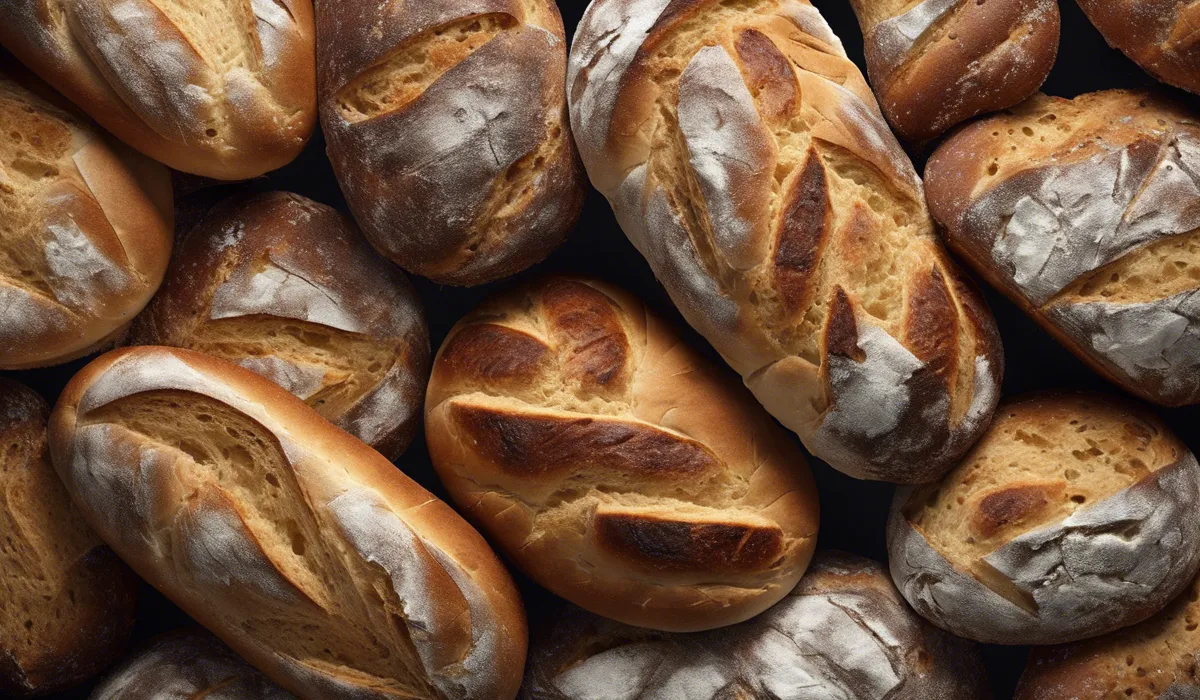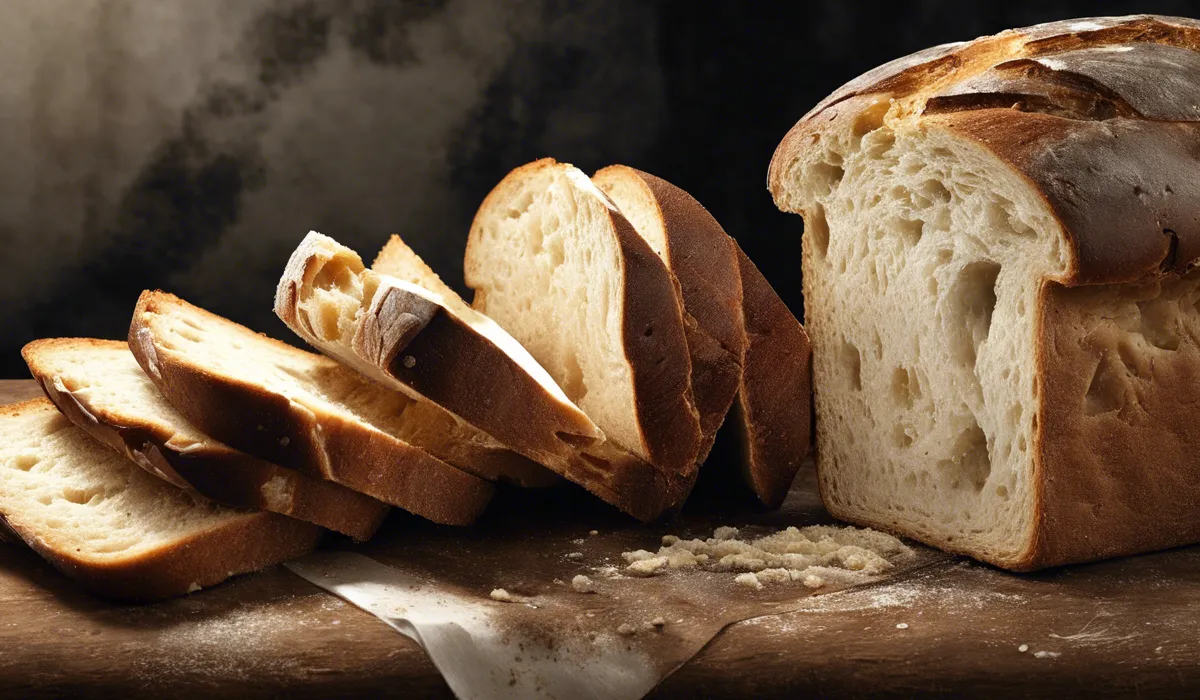Bread mold can be dangerous as it may produce mycotoxins harmful to health. Ingesting moldy bread risks allergic reactions and respiratory problems. It’s best to discard moldy bread to avoid potential health risks.
Understanding Bread Mold

Definition of Mold
Mold is a type of fungus that grows in the form of multicellular filaments called hyphae.
It thrives in various environments, especially those that are damp and warm. Mold reproduces through spores, which are tiny particles that can travel through the air.
Once these spores land on a suitable surface, such as bread, they can grow and spread.
Common Types of Mold Found on Bread
Rhizopus stolonifer (Black Bread Mold)
Rhizopus stolonifer, commonly known as black bread mold, is a fast-growing mold that appears as fuzzy, black patches on bread. It can cause the bread to become soft and inedible.
Penicillium
Penicillium molds often show up as blue or green spots with a distinct musty smell. They are the same type of mold used to produce the antibiotic penicillin and some cheese varieties.
Aspergillus
Aspergillus is another common mold on bread, typically appearing in green or yellow patches. It can grow in a variety of environments and sometimes produces harmful substances known as mycotoxins.
How Mold Develops on Bread?
Factors Contributing to Mold Growth
Mold growth on bread is influenced by humidity, temperature, and time. High humidity and warmer temperatures create an ideal environment for mold to thrive.
The longer bread is stored, the more likely it is that mold will develop.
Visible and Microscopic Growth
Mold growth can begin as microscopic spores that are not visible to the naked eye. Over time, these spores grow into visible colonies that appear as fuzzy spots on the surface of the bread.
By the time mold is visible, the bread is often overrun with mold growth below the surface as well.
Health Risks Associated with Bread Mold

Mycotoxins and Their Effects on Health
Aflatoxins
Aflatoxins are a type of mycotoxin produced by certain mold species, such as Aspergillus. They are known to be carcinogenic and can lead to liver damage if ingested in large amounts.
Ochratoxins
Ochratoxins are another group of mycotoxins that can be harmful to kidneys and may also have carcinogenic properties.
Exposure to ochratoxins is a health concern that should be taken seriously.
Allergic Reactions and Respiratory Issues
Eating moldy bread can lead to allergic reactions in some individuals. Symptoms can include sneezing, itching, and breathing difficulties.
Those with asthma or other respiratory conditions may experience more severe reactions.
Mold-Related Infections in Immunocompromised Individuals
For people with weakened immune systems, such as those undergoing chemotherapy or living with HIV/AIDS, mold can cause serious infections.
These infections can be difficult to treat and may lead to severe health complications.
Instances When Ingesting Mold Might Be Harmless
While it’s best to avoid eating moldy bread, not all molds are toxic. In some cases, ingesting small amounts of mold might not cause any noticeable health issues.
However, it is always safer to err on the side of caution and discard moldy food.
Preventing and Handling Moldy Bread

Tips for Preventing Mold Growth on Bread
Proper Storage
Storing bread in a cool, dry place can help slow down mold growth. Bread boxes, airtight containers, or even the freezer can be good options for storage, depending on how quickly you plan to consume the bread.
Handling Moisture
Keep bread away from moisture sources, as humidity can accelerate mold growth. Ensure that bread is properly sealed and any condensation inside packaging is minimized.
Refrigeration vs. Room Temperature
While refrigeration can slow mold growth, it can also dry out bread. Decide whether to refrigerate based on how quickly you will eat the bread and your preference for freshness.
Safe Practices When Discovering Mold on Bread
Discarding Moldy Pieces
If you find mold on bread, throw away the moldy pieces immediately. Do not sniff the mold, as this can cause respiratory issues.
Checking for Cross-Contamination in the Bread Bag
Even if only one slice of bread appears moldy, spores may have spread throughout the bag. Check all pieces carefully and discard the entire content if in doubt.
When to See a Doctor After Consuming Moldy Bread?
If you accidentally consume moldy bread and experience symptoms such as nausea, vomiting, or allergic reactions, seek medical attention promptly.
Alternatives to Traditional Bread to Reduce Mold Exposure
Preservative-Laden Breads
Breads with added preservatives may have a longer shelf life and be less prone to mold growth.
However, be aware of the types of preservatives used and choose options that align with your health goals.
Homemade Bread with Natural Preservatives
Making bread at home allows you to control the ingredients, including the use of natural preservatives like vinegar, which can help prevent mold without adding artificial substances.
FAQs About Bread Mold Danger
Is it safe to eat around the mold on bread?
No, it’s not safe because mold can have invisible threads that spread throughout the bread, potentially carrying toxins.
Can bread mold cause health issues if ingested?
Yes, ingesting bread mold can lead to allergic reactions, respiratory problems, and exposure to mycotoxins that are harmful to health.
What should I do if I find mold on my bread?
Discard the moldy bread entirely to avoid potential health risks.
Is smelling moldy bread also harmful?
Yes, inhaling mold spores from bread can lead to respiratory issues, especially in individuals with mold allergies or compromised immune systems.
Are some types of bread mold more dangerous than others?
Some molds produce more mycotoxins than others, making them particularly dangerous, but it is difficult to determine the type of mold by sight, so it’s best to avoid all moldy bread.
Final Thoughts
Bread mold poses a health hazard due to the potential production of mycotoxins. Consumption of moldy bread can lead to allergic reactions and respiratory issues.
To safeguard health, it is advisable to err on the side of caution and dispose of any bread showing signs of mold.
